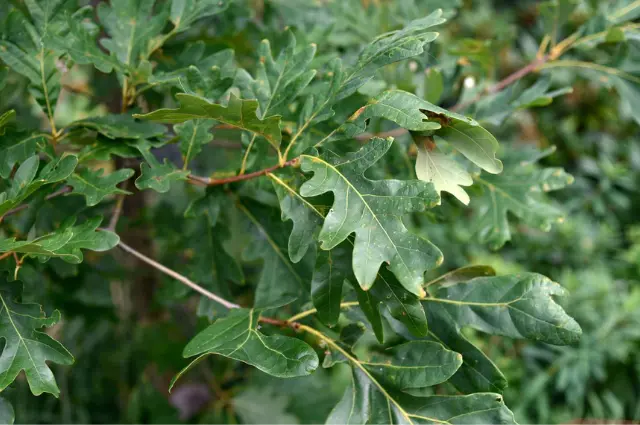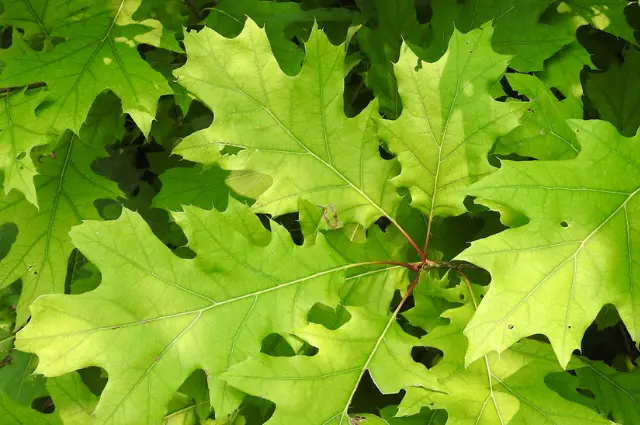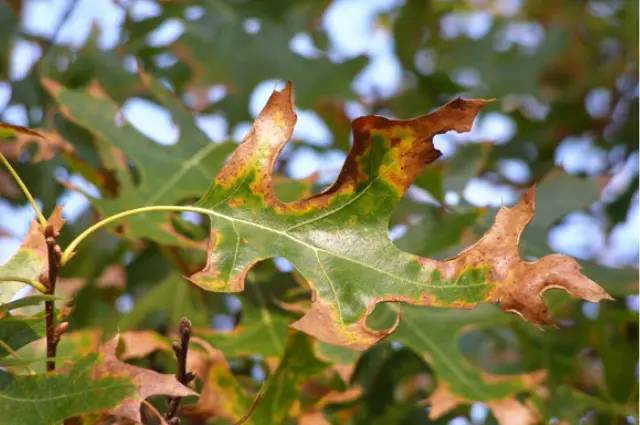Oak trees have long been admired for their majestic presence and significant ecological contributions. One of the most striking features of these iconic trees is their leaves. Oak tree leaves, with their distinctive shape, color, and texture, offer much more than just aesthetic appeal. In this blog, we’ll delve into everything you need to know about oak tree leaves—from their unique characteristics to their ecological and medicinal benefits. Whether you’re a nature enthusiast or simply curious about these remarkable trees, read on to discover the beauty of oak tree leaves.
What Are Oak Tree Leaves?
Oak tree leaves are the foliage of oak trees, which belong to the genus Quercus. These trees are found across a wide range of climates, from temperate regions to more tropical zones. The leaves of oak trees vary in shape and size depending on the species, but they generally share some common characteristics, such as their lobed shape with deep indentations along the edges. These leaves are typically dark green in the spring and summer and transition to a stunning array of red, yellow, or brown shades in the fall.
Types of Oak Tree Leaves
There are over 600 species of oak trees, and the leaves of each species can differ in subtle ways. Broadly, oak leaves can be classified into two categories:
- Deciduous Oak Leaves: These oak leaves, found on trees like the White Oak and Red Oak, change color and fall off each year in the autumn. The leaves are usually lobed with rounded or pointed tips.
- Evergreen Oak Leaves: Some oak species, such as the Live Oak and Holm Oak, keep their leaves throughout the year. These leaves tend to be smaller and leathery, often with a more rigid texture to survive in harsher climates.
Understanding these differences can help in oak tree identification, as each species has its own distinct leaf shape and texture.
White Oak Tree Leaves

The white oak tree leaves are some of the most easily recognizable among oak species. White oak leaves are typically lobed with rounded edges and a light green color in the summer. In autumn, the leaves turn a rich red to purple color before falling. One distinguishing feature of the white oak leaves is their smooth, rounded lobes, which contrast with the more pointed lobes found in other species, like the red oak. This can be a helpful characteristic when identifying oak trees.
Black Oak Tree Leaves

The black oak tree leaves are another distinct type of oak leaf. Black oak leaves tend to have pointed lobes with a glossy, dark green color in the spring and summer. In autumn, the leaves turn a deep yellow or brown. The underside of black oak leaves is often covered with a soft, grayish fuzz. This texture can help in oak tree identification, as it sets them apart from other species like white oaks, which have smoother undersides.
Brown Leaves on Oak Tree

If you’ve noticed brown leaves on oak trees, you may be wondering what’s causing this discoloration. In most cases, the brown leaves signify the natural aging process in the autumn months as the tree prepares for winter. However, in some instances, brown leaves on oak trees may indicate stress due to factors such as drought, pests, or disease. In healthy oak trees, brown leaves typically appear in late fall, contributing to the tree’s beautiful autumn display. If brown leaves appear prematurely or stay on the tree longer than usual, it might be worth investigating further to ensure the tree’s health.
How to Identify Oak Tree Leaves
If you’re looking to identify an oak tree based on its leaves, there are several characteristics to look for:
- Shape: Oak tree leaves are typically lobed, with edges that can be deeply serrated or rounded, depending on the species. For example, white oak tree leaves are known for their rounded lobes, while black oak tree leaves have sharper, pointed lobes.
- Size: The size of the leaves can range from small and narrow to large and wide, with some species producing leaves that are up to 8 inches long.
- Color: During the growing season, oak leaves are a rich green, but they transition to shades of red, orange, and brown in the fall. If you see brown leaves on oak trees, it’s likely autumn or a sign of stress.
- Texture: Oak leaves have a rough texture, often with a waxy coating to prevent water loss. Black oak tree leaves often have a fuzzy underside, while white oak tree leaves tend to have a smooth underside.
Ecological Importance of Oak Tree Leaves
Oak tree leaves are a significant resource for various species in the ecosystem. Many insects, including caterpillars, feed on the leaves of oak trees. Oak trees are also known to host a wide range of wildlife, from birds to mammals, who rely on the leaves and the acorns produced by these trees.
Fallen oak leaves decompose and enrich the soil, contributing to nutrient cycling in the forest. This provides an ideal environment for other plants and trees to grow, ensuring the health of the entire ecosystem.
The Medicinal Benefits of Oak Tree Leaves
In addition to their ecological importance, oak tree leaves have been used in traditional medicine for centuries. They contain tannins, which have antimicrobial and anti-inflammatory properties. Oak tree leaves are often used in herbal remedies to treat conditions such as:
- Skin Ailments: The astringent properties of oak leaves make them useful in treating minor cuts, wounds, and skin irritations.
- Diarrhea and Digestive Issues: Oak leaves have been used in folk medicine to alleviate gastrointestinal problems like diarrhea.
- Anti-inflammatory Properties: Oak leaf extract may help reduce inflammation and is sometimes used in treatments for arthritis.
However, it is important to note that these medicinal uses should always be approached with caution and discussed with a healthcare professional before use.
Conclusion
Oak tree leaves are not only beautiful and unique but also serve many important functions within the environment. From supporting diverse wildlife to enhancing soil fertility, they are an integral part of the ecosystem. Whether you’re admiring their vibrant colors in the fall or recognizing their medicinal properties, oak tree leaves are a remarkable aspect of nature that deserve our attention and appreciation.
When identifying oak trees, pay close attention to their leaves, whether it’s the rounded lobes of white oak tree leaves, the sharp edges of black oak tree leaves, or the changing colors that mark the fall season. Each type of oak tree leaf tells its own story about the species it represents, adding another layer of beauty to these already impressive trees.
So, next time you spot an oak tree, take a moment to appreciate the intricacies of its leaves and the role they play in both the environment and our well-being.






What’s Going down i’m new to this, I stumbled upon this
I have discovered It positively useful and it has aided me out loads.
I am hoping to give a contribution & help other customers like its helped me.
Great job.